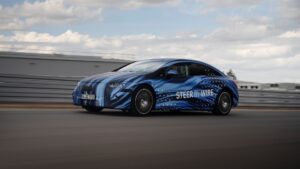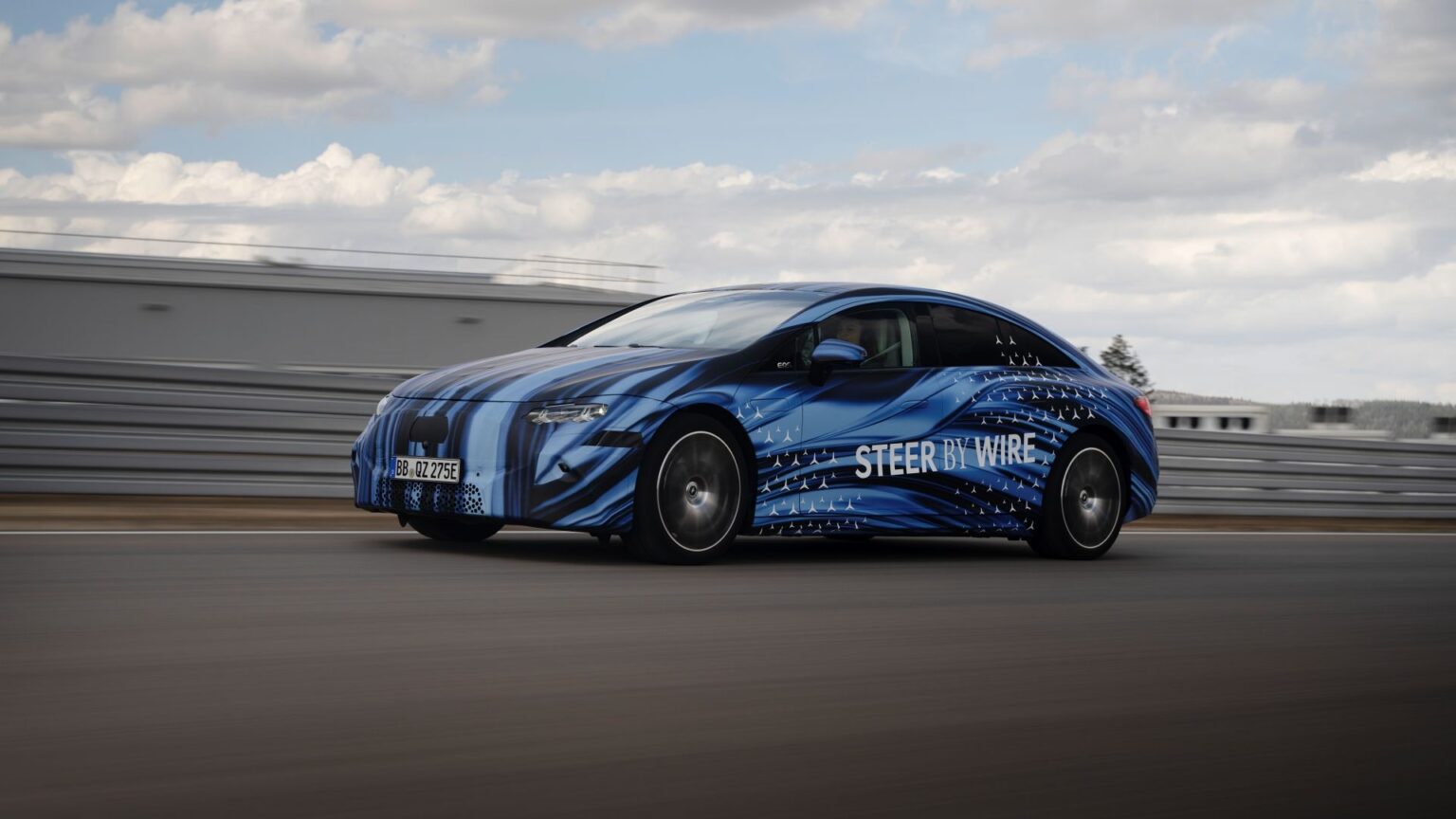Borrowing an idea that’s already been implemented by Infiniti and Tesla, and is under development by Lexus, Mercedes-Benz is set to become the first German automaker to offer steer-by-wire, which is expected to hit the market in 2026. A controversial idea, this technology nonetheless offers some intriguing benefits. As the name suggests, with Mercedes-Benz’s steer-by-wire system, there’s no physical, mechanical connection between the tiller and front tires; this is all done electronically with wires, actuators and likely loads of software.
There Are Some Real Benefits To Consider
The technology promises to make future vehicles easier to drive and more agile, particularly at low speeds, where hand-over-hand steering maneuvers can be eliminated.
Of course, a system like this can be tuned in myriad ways, for greater sportiness or comfort, and Mercedes-Benz engineers plan to offer unique steering characteristics for different vehicles in the automaker’s diverse lineup. The company explained that for road feel, the tire contact patch is calculated on a model-by-model basis, so what you feel in, say, a CLA will be different than in a G-Class, though it might be fun – or more likely, terrifying – to swap the steering profiles between these two extremely different models.
Aside from all that, steer-by-wire provides a few other noteworthy benefits. With no physical connection between the steering wheel and tires, roadway vibration can essentially be eliminated. This technology also enables you to have a steering wheel with a flat top and bottom, which allows greater visibility of the instrument cluster AND can make it easier for some drivers to slide into the captain’s chair. And finally, eliminating any physical connection to the front wheels can also allow designers and engineers to create interesting new vehicle form factors, since they don’t have to fit additional steering hardware underneath the dashboard and hood.
“Steer-by-wire is another big step towards the mobility of tomorrow, and we’re proud that we will be launching such a system in 2026,” said Markus Schäfer, chief technology officer for development and procurement at Mercedes-Benz. “The technology enables a unique customer experience that goes far beyond steering alone. In combination with SAE Level 3 conditionally automated driving, it will enable an even more immersive entertainment experience in the medium term,” the company leader also noted. “That’s because the flat steering wheel provides a better view of the display when streaming your favorite show, for example.”
Extensively Tested To Meet Mercedes-Benz Safety Standards
But what if something goes wrong? Are you destined to plow straight into a ditch or ping-pong off other vehicles on the highway? No, not if Mercedes-Benz engineers have their way.
No direct connection to the front axle sounds like a bad idea if anything ever fails, however, this implementation of the technology will have redundant systems for practically everything – electrical pathways, actuators, data, and power supplies for all that hardware. And if, against all odds, the redundancy also fails, steer-by-wire Mercedes-Benz vehicles could still be maneuvered using rear-axle steering, though this almost certainly wouldn’t work as well. Still, some steering is better than none, especially while underway.
Ensuring safety, this technology has been evaluated for more than 621,000 miles (1 million kilometers) on test benches. According to the automaker, a similar number of miles have also been logged on proving grounds and during validation driving in real-world traffic.
Other automakers, notably Infiniti, haven’t been terribly successful with steer-by-wire. Car enthusiasts complained bitterly about the company’s implementation of this technology, though Tesla’s seems to be less annoying. It will be interesting to see how Mercedes-Benz’s offering performs once it hits the market, which again, is scheduled to be next year.
Read the full article here



